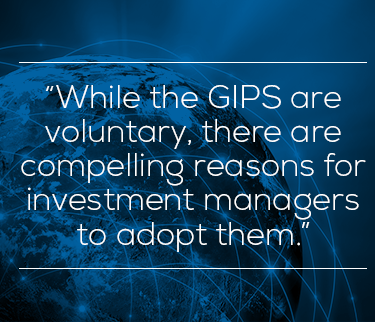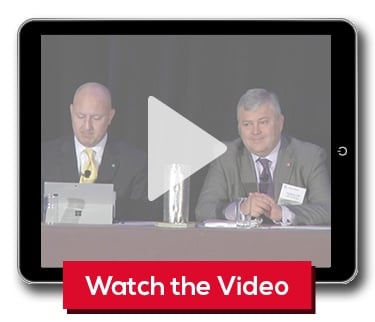Coming soon: GIPS 20/20, the latest update of the performance standards to which more than 1,600 fund managers around the world now subscribe.
 Some 10 years after the Global Investment Performance Standards (GIPS) were last updated, the Chartered Financial Analyst (CFA) Institute has recently announced it is now working on a new version of the code, with the changes due to be implemented in three years’ time.
Some 10 years after the Global Investment Performance Standards (GIPS) were last updated, the Chartered Financial Analyst (CFA) Institute has recently announced it is now working on a new version of the code, with the changes due to be implemented in three years’ time.
The update is hugely significant given that 85 of the worlds 100 largest asset managers have now chosen to comply with the GIPS. In this post-financial crisis era, savers and investors have never been so mistrustful of financial services businesses. And after a string of scandals, including the Madoff affair, the investment industry is particularly in need of ways to build trust with its customers.
For this reason, the GIPS are more pertinent to many investment firms today than ever before. The GIPS are a set of standardized, industry-wide ethical principles that set out how investment firms should calculate and present their investment results to prospective clients. Crucially, this gives clients a standard for comparing investment managers using a benchmark they know they can trust.
{{cta(‘ac6116e0-3f05-4cc8-a5b6-309ed30d8fef’)}}
While the GIPS are voluntary, there are compelling reasons for investment managers to adopt them. Not least, investors who have become accustomed to the GIPS as best practice will be wary of working with managers that choose not to embrace the standards. They may assume this means the manager is less committed to ethical standards, or that its performance measurement processes aren’t rigorous enough for it to comply. That might suggest other controls within the firm are also weak.
How the GIPS evolved
Part of the appeal of the standards is their long-standing. The GIPS has its origins in the late 1980s, when the Association for Investment Management and Research (AIMR), an investment management industry association, first began developing a set of benchmarks for the North American investment markets. The group subsequently recognized the need for a global solution, and began to develop a broader set of standards; the first GIPS came out in 1999 and in 2006, a single set of global standards was approved by the CFA Institute, which by then had succeeded the AIMR.
The GIPS are voluntary, ethical standards that set out how an investment manager’s past performance should be calculated and then publicly presented – including to prospective clients. The aim is to encourage investment managers to present their performance history in ways that are fair and comparable.
The standards are deliberately designed to discourage fund managers from picking and choosing time periods over which to present their past performance according to the period that paints them in the best light. Similarly, the standards attempt to prevent managers from cherry-picking those funds and accounts that have had the best results; instead the GIPS Composites rules require fund managers to include all their portfolios in at least one “composite” that is calculated and presented in accordance with the standards.
The overall aim is that the GIPS create a level playing field on which managers can compete – and provide an environment in which investors can be confident in the governance of their manager selection decisions.
The GIPS in practice
The GIPS have to be applied at a fund manager-wide level to define the boundaries for determining total firm assets, as GIPS compliance cannot be achieved on a composite or product-specific basis. These boundaries are expected to capture all of the discretionary investments made by managers in all of the countries in which they operate. This requires managers to group the performance histories of different client funds into composites of similar portfolios.
This concept of standardized performance composites is at the center of the GIPS standards; to comply, managers are expected to include all discretionary, fee-paying portfolios in at least one composite defined by investment mandate, objective, or strategy.
The GIPS also require a fund manager to show the full history of each composite – either from inception, or over five years and up to 10 years. Most managers comply with the best practice requirement to have their claim of compliance independently verified by a third party – typically an audit firm or compliance consultant.
Implementing the GIPS
There are two main elements to consider when implementing the GIPS standards: compliance and verification.
Compliance focuses on making sure that all the fund manager’s processes and procedures meet the six components of the GIPS standards – Fundamentals of Compliance, Data Input, Calculation Methodology, Composite Construction, Disclosures, and Presentation and Reporting.
Verification, meanwhile, must be performed by a qualified independent third-party that is able to assess whether the firm has complied with all composite construction requirements, and met all the requirements surrounding the calculation and the presentation of performance data.
In practice, fund managers embracing the GIPS will need performance measurement tools and technologies that are capable of delivering and maintaining compliance – ideally functionality that directly supports compliance. Such tools will need to be able to generate all the information required under the GIPS for reporting and analysis – and to support the verification process; for example, by automatically associating portfolios with accounts.
Takeaways
- The GIPS can help your fund manager deal transparently with investors and intermediaries
- The GIPS requires you to calculate and publish performance data in a standardized fashion
- The GIPS 20/20 will be the first major update of the standards for 10 years
- GIPS compliance will require you to use performance measurement technologies that support the process
